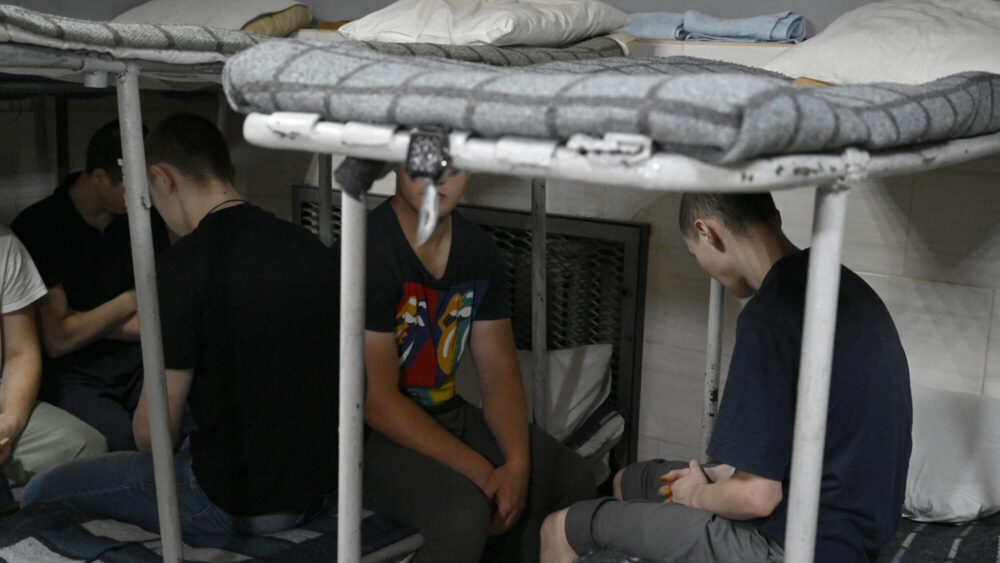
Russian prisoners of war at a Ukrainian facility at an undisclosed location in the Sumy region
Genya SAVILOV / AFP
Russia and Ukraine exchanged 230 captured troops on Saturday, August 24th, the first prisoner swap since Ukraine began its incursion into the Russian region of Kursk on August 6th. Both sides confirmed that the 115 Russian troops released on Saturday were all captured in Kursk, within the “territories [now] controlled by Kyiv,” Ukrainian President Volodymyr Zelensky said.
As early reports pointed out, the border area was mainly guarded by young Russian conscripts at the time when the surprise Ukrainian offensive began, many of whom put down their weapons as soon as they encountered the battle-hardened Ukrainian troops.
In exchange for them, Moscow released the same number of Ukrainian troops captured at various locations and stages of the war, including members of the National Guard, the Armed Forces, the Navy, and the Border Guard.
In his speech on Saturday, Zelensky praised the success of the Kursk offensive, which—albeit for an enormous price—managed to achieve its primary objectives, including capturing POWs for future prisoner swaps.
“Another 115 of our defenders have returned home today,” Zelensky said, adding that many more are still waiting to be released. “We remember each and every one. We are searching for and making every effort to bring everyone back.”
Zelensky also expressed gratitude to the United Arab Emirates (UAE) which reportedly mediated the exchange in the absence of formal peace talks or any diplomatic relations between the two warring nations.
This is not the first time the Gulf country led successful diplomatic efforts during the war. According to the UAE’s foreign ministry, its mediation helped nearly 1,800 soldiers return home so far, including 478 during one of the biggest prisoner swaps of the conflict back in January.
Zelensky also said that the Kursk offensive achieved its other objectives as well, including preventing Russia from staging an attack on the Ukrainian city of Sumy, increasing the internal pressure on Moscow to end the war sooner through diplomatic means, as well as others he could not disclose yet.
As observers also noted, the main reason behind the incursion was to equip Kyiv with something tangible—prisoners, territory—it can put on the negotiating table during the prospective peace talks later this year. In this regard, Kursk opens up a wider window for peace than there has been for the better part of the last two years.
“Experience teaches us that Russia only negotiates in good faith when it is placed under pressure and negotiation is the only option,” Ukrainian Foreign Minister Dmytro Kuleba said earlier this month. In late July, Kuleba traveled to Beijing for the first time since Russia invaded in 2022, asking the Xi government to mediate.
Both Kyiv’s push for opening diplomatic talks with Russia as soon as November and involving China in the process were among the main points recommended by Hungarian PM Viktor Orbán’s ‘peace plan’ which he sent around the EU capitals last month. Orbán’s third point—reclaiming the respect of the Third World—is also on Kyiv’s agenda, as it is the explicit reason why Zelensky would like to hold the next peace summit somewhere in the Middle East instead of Switzerland where the previous two (without Russia) were held.
